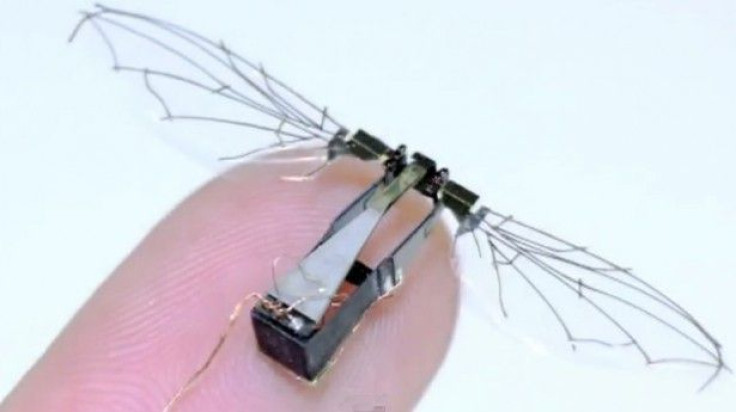Here's What The Future Of Insect And Nano Drones Looks Like [VIDEO]

Tiny drones are widely expected to become a fixture of American airspace come 2015 as Federal Aviation Administration rules become more relaxed. The FAA believes there will be around 20,000 drones in the sky by 2017, although some say that figure will be much higher.
The drones will come in all shapes and sizes, and they have many different purposes. At the moment, General Atomics' armed surveillance MQ-9 Reaper drone patrols America’s borders looking for illegal immigrants and drug dealers, but many of the drones that are coming, and in some cases are already operating, will be nano drones or insect drones.
The financial advantages are huge. The average nano drone costs about $25 per hour to run, in comparison to manned helicopters and planes, which can cost between $600 to $20,000 per hour. The ability to be compact and undetectable is a major advantage. Furthermore, the lives of pilots, airmen and police are not at risk with these small, unmanned crafts.
At the moment, 56 government agencies are allowed to operate drones in 63 active drone sites, not including the six new sites where the FAA has allowed the testing of drone technology in the lead-up to legislation changes in 2015 and beyond. The number includes 22 law enforcement agencies and 24 universities.
Aside from the larger military-style drones and the easy-to-see drones that the police use, nano drones will be the most dominant drone force in the future, and, as it happens, the biggest threat to privacy.
Here’s a rundown of nano drones to look out for in 2015:
Dragonfly Drone
This drone was used by the government as early as 2007 at a Washington, D.C., protest.
Hummingbird drone
This is almost identical to an actual hummingbird in size, weight and appearance. The military uses it for surveillance.
Black Hornet Nano Drone
This drone is used by the British military as a surveillance drone. It can fly for about 20 minutes and can travel for 3,290 fee from the operator.
Roachbot
It mimics a cockroach's stealth abilities, is about four inches long and can climb walls. Developed by the University of California, Berkeley, the drone is capable of standing upside down under a ledge.
Raven Drone
This is the most popular drone, with more than 19,000 built. Although it's not very small or light, the Raven's popularity is due to its ability to beam back clear pictures from altitudes of about 15,000 feet.
© Copyright IBTimes 2024. All rights reserved.












